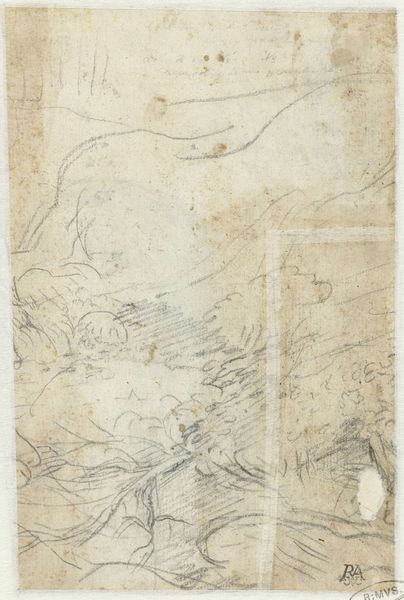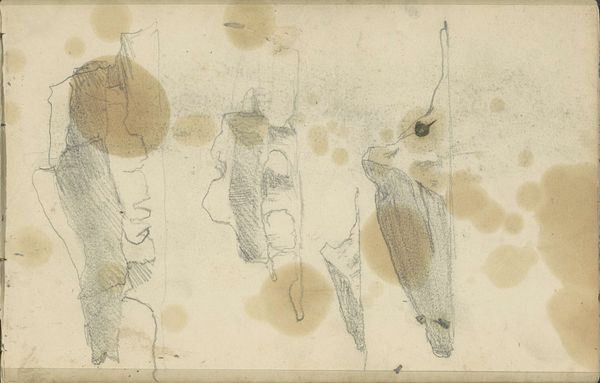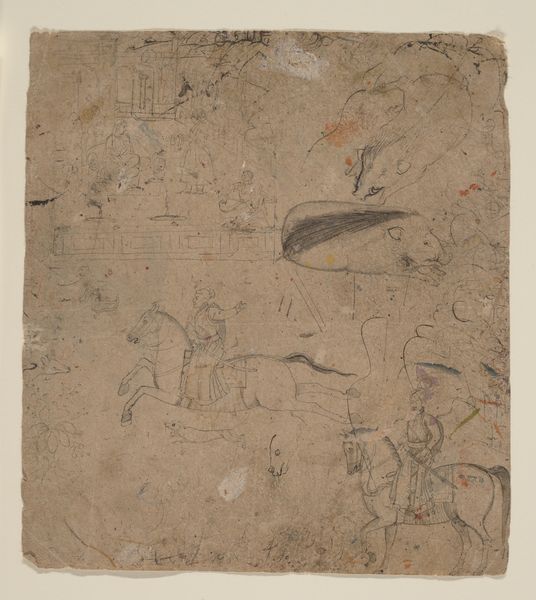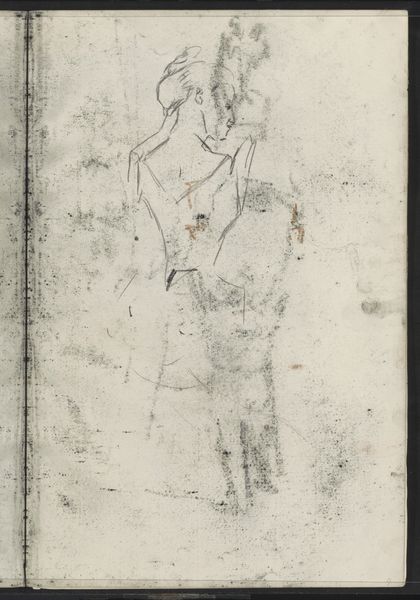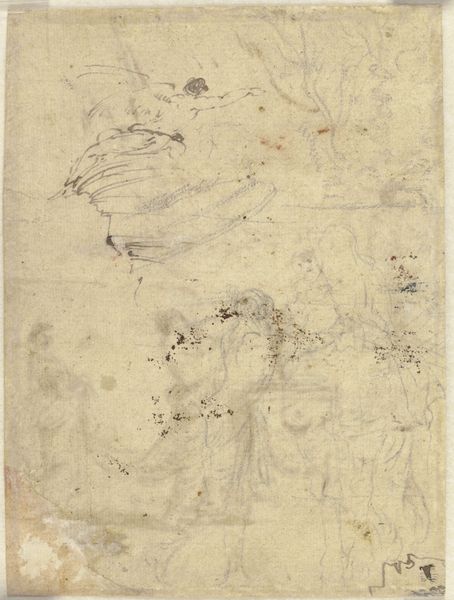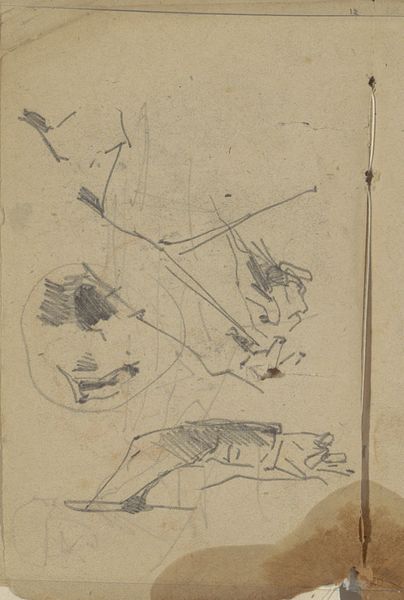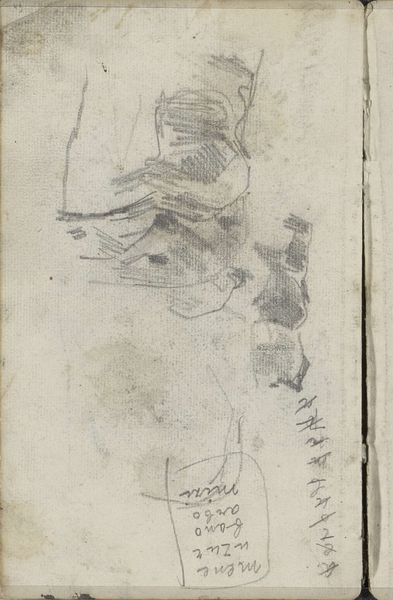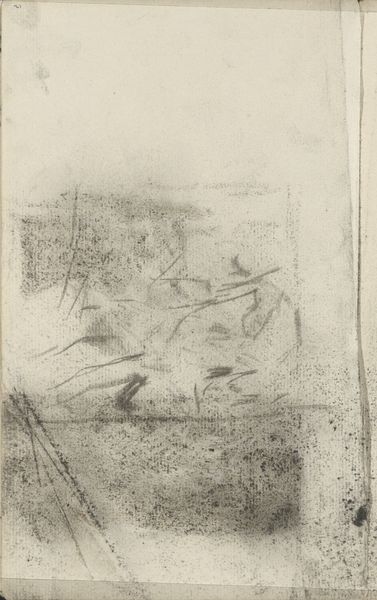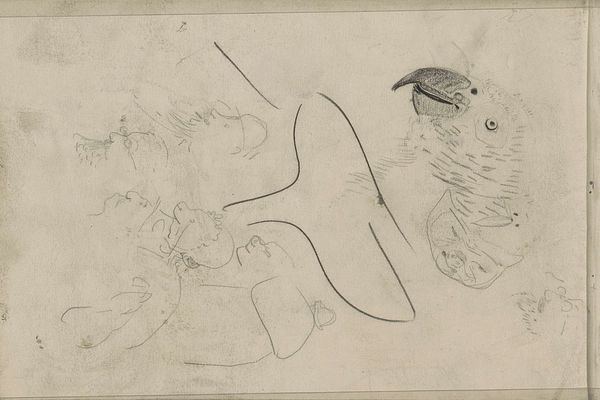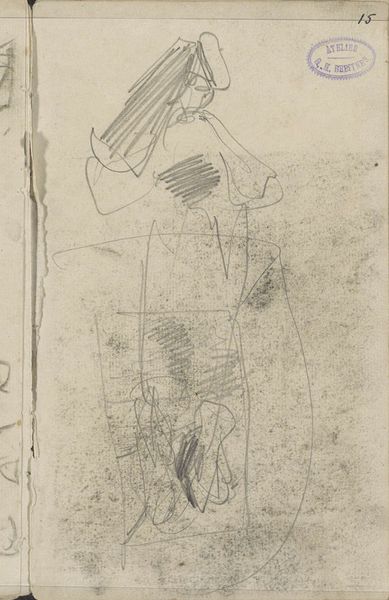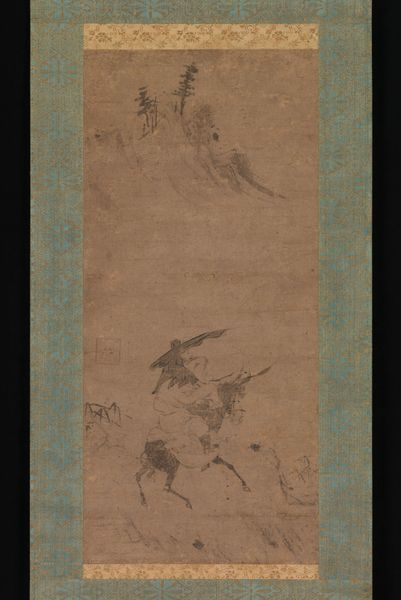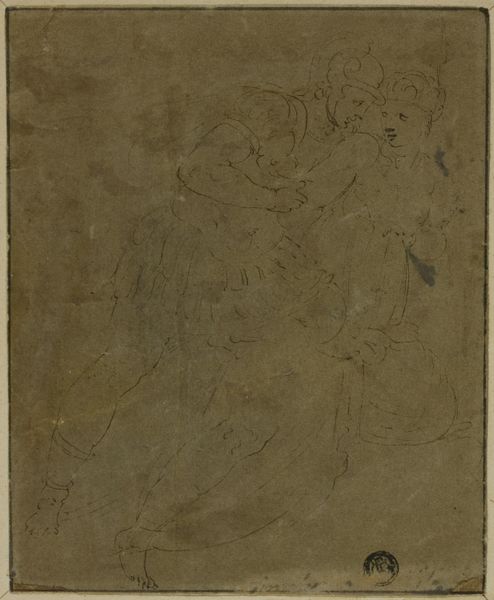
drawing, paper, ink
#
drawing
#
light pencil work
#
quirky sketch
#
pen sketch
#
incomplete sketchy
#
paper
#
personal sketchbook
#
ink
#
ink drawing experimentation
#
sketch
#
pen-ink sketch
#
sketchbook drawing
#
watercolour illustration
#
sketchbook art
#
realism
Dimensions: height 584 mm, width 373 mm
Copyright: Rijks Museum: Open Domain
Curator: Looking at this artwork, there's something unsettling about it, a kind of frenetic energy. Editor: Indeed. We're looking at "Studieblad met kreeften," or "Study Sheet with Lobsters," a drawing in ink on paper, dating roughly between 1876 and 1924 and attributed to Gerrit Willem Dijsselhof. It’s part of the Rijksmuseum collection. Curator: The hasty linework speaks volumes. It feels less like a scientific illustration and more like…an anatomical anxiety dream. Did he do studies for any popular restaurants or fisheries that wanted some material or inspiration for their shopwindows, or food magazines? Editor: It seems his artistic development drew heavily on both symbolism and the decorative arts. Think about the Arts and Crafts movement flourishing during that time. The focus was very much on integrating art into everyday life, elevating craft to the same level as fine art. I imagine that such sketchbook pieces allowed for a level of freedom that’s not present in finished, commissioned objects. I do think they also are a product of its time and market conditions. This sketchy freedom allowed Dijsselhof to create something appealing for potential customers who had a hunger for art objects. Curator: That’s true, although, in that light, the dark, almost violent hatching gives me pause. Is there an undercurrent of criticism in using images from what would normally become high class food items in combination with materials associated with labor class artistry? The raw immediacy challenges traditional artistic value. Is it trying to expose the mechanics of aesthetic production? Editor: Possibly. The choice of such ordinary materials invites discussion on labor and value. The act of capturing crustaceans wasn't particularly valued. The fast execution might suggest Dijsselhof trying to elevate the working conditions, maybe trying to give an interpretation. Curator: Maybe he succeeded. Either way, that lobster is definitely staring back at us. Editor: This definitely offers a lens through which to view his more well-known decorative work. Thank you.
Comments
No comments
Be the first to comment and join the conversation on the ultimate creative platform.
